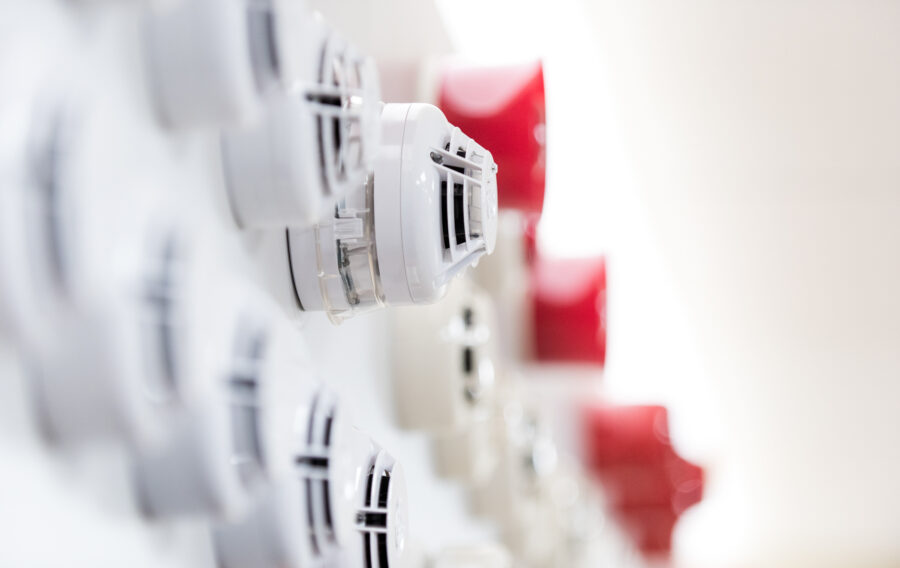Effective fire protection in nurseries, schools, colleges and universities is required to ensure staff, pupils and visitors are kept as safe as possible.
There are many services available to protect against the threat of fire, including fire alarms, fire extinguishers, fire blankets and sprinkler systems. Whilst the majority of educational establishments are well-versed in what is required of them, statistics from April 2019 showed that just 15% of newly built schools were fitted with sprinkler systems.
As the debate about the need for sprinkler systems being fit into new build schools continues, there are other ways to defend against the threat of fire.
Being prepared
Unless it’s part of a planned fire drill, the fire alarm sounding during the school day can cause worry, but it should not cause confusion or stress if processes are in place.
Using a personalised fire safety plan, staff should be aware of safe evacuation processes and how to use fire extinguishers if safe to do so.
There are different types of fire extinguishers suitable for the various classes of fire. Consider which type are needed in your school:
- How many Class A extinguishers are needed for the whole premises?
- Are the appropriate extinguishers located in the building for the correct risk environment?
- Are the minimum travel distances between extinguishers correct?
As well as using the correct extinguisher, you need to ensure staff have received the relevant training to use the equipment. Fire safety training must be provided to all employees when they first join the business, or are given a change of responsibilities. More on fire safety training from Churches Fire & Security can be found here.
Fire risks in schools
In a typical school kitchen, you’re likely to find a cooker, microwave, fryers and handheld appliances such as whisks and food processors. This would be classed as a ‘mixed risk’ environment, so a wet chemical extinguisher is recommended for cooking oil fires and a Co2 extinguisher should be used for electrical risks.
A fire blanket is also advised in a kitchen to be used in case of a pan fire or if a person’s clothing or hair catches fire.
In a science block or laboratory, there is an extensive list of fire risks. Chemicals, equipment and electricals all pose a safety risk if not treated with respect. As another ‘mixed risk’ environment, there is need for a number of different extinguishers. A powder extinguisher is required for gas risks, a Co2 for electrical hazards and a foam extinguisher for flammable liquids.
Maintaining fire safety measures
When the correct fire extinguishers are in place, it is just as important to ensure they are not damaged or malfunctioning, especially when the next time you’re likely to need them will be in an emergency situation.
British Standards state that extinguishers must be serviced annually by a competent person with the relevant qualifications and understanding of legislation. Churches Fire & Security are registered to BAFE SP101, demonstrating our competency to provide on-site servicing, providing peace of mind to our customers as we maintain their extinguishers.
A visual inspection of your fire extinguishers should be carried out weekly to check for signs of corrosion or damage. Signs of what to look for can be seen in our monthly checks video.
Further fire safety services
With the correct fire extinguishers in place, consideration must also be given to emergency lighting and fire alarms.
Emergency lighting illuminates escape routes and highlights signs and safety equipment. This could be especially vital in education settings where children board.
Fire alarms are often be the first warning of a fire and simply cannot be ignored. Much like emergency lighting and extinguishers, fire alarms are required in most buildings in accordance with The Regulatory Reform (Fire Safety) Order 2005. There are several categories of fire alarms, and Churches Fire & Security works with businesses to determine the system required to meet the risks.
If you would like to talk to us about the fire safety in your school, please get in touch.
Contact us





